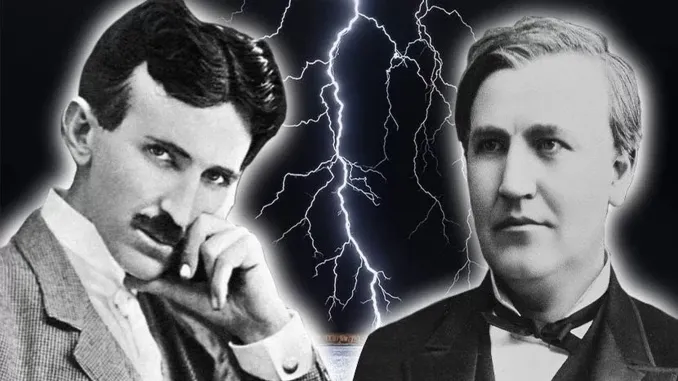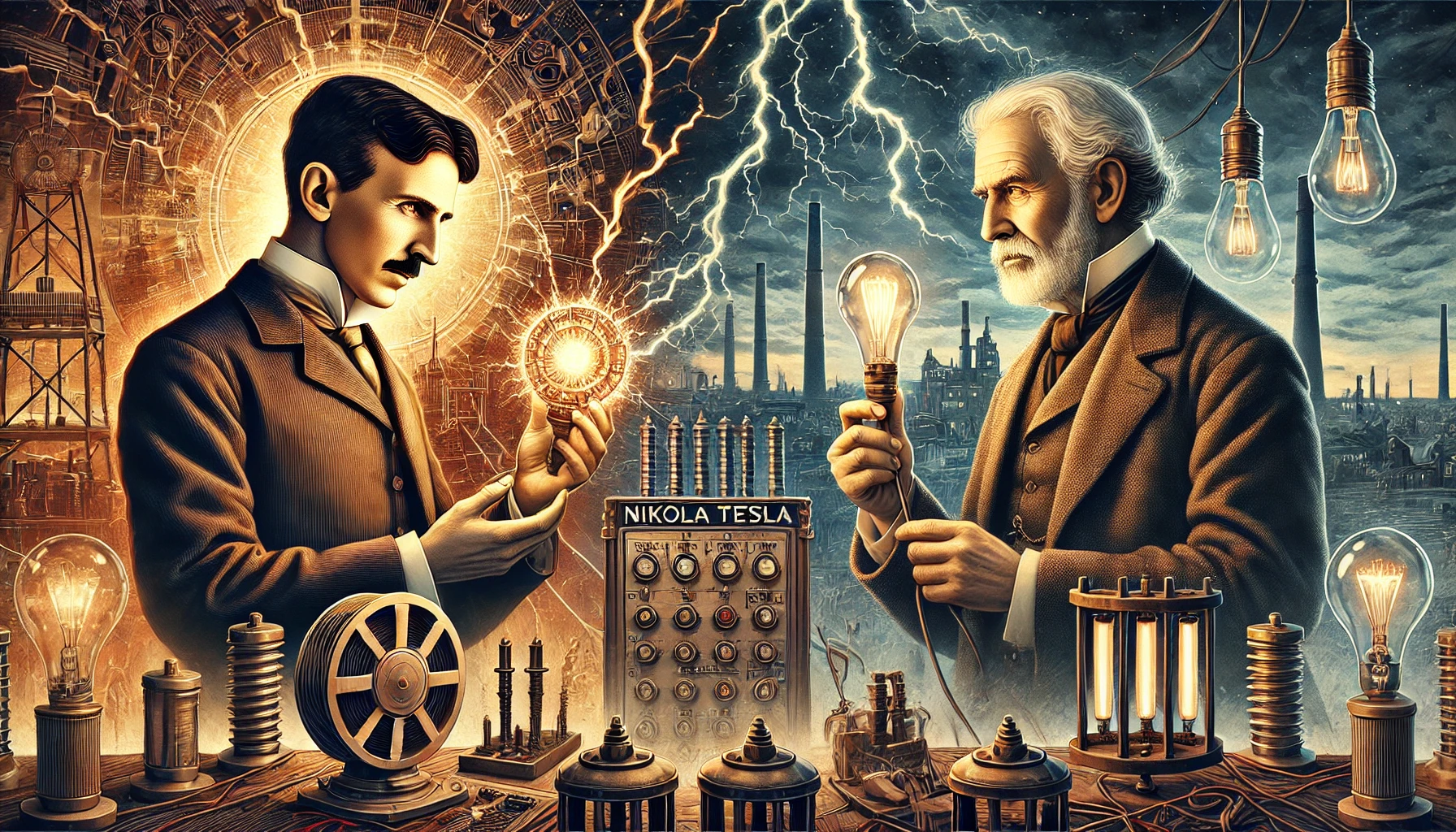The War of Currents is the gripping story of the fierce rivalry between two geniuses who laid the foundations of modern electricity: Nikola Tesla and Thomas Edison. This struggle revolved around the revolutionary innovations offered by alternating current (AC) and Edison’s determination to preserve his direct current (DC) system. Tesla’s visionary ideas and Edison’s commercial savvy had a profound impact on electrical engineering, shaping the technologies we rely on today. In this article, we’ll delve into the depths of the War of Currents, exploring the contributions and challenges faced by these brilliant minds.
On January 7, 1943, a hotel maid entered room 3327, where one of the hotel’s long-term residents stayed. Inside, she found the lifeless body of an 86-year-old man who had died alone. That man was Nikola Tesla. For the last nine years of his life, Tesla had lived in debt, subsisting on little more than milk and crackers. The small resources he had left were spent caring for local pigeons. Tesla was regarded as one of the greatest minds of the modern era. As the pioneer of alternating current, he developed the electrical system that illuminates our homes. His influence extended to many areas, including remote control and radio. What made his work most remarkable was that it stemmed not from ambition or profit but from a deep passion for science.
Tesla’s Early Life
Nikola Tesla was born on July 10, 1856, in what is now Croatia. His mother came from a family of inventors and possessed an extraordinary memory, able to recall entire Serbian epics by heart. She instilled in Tesla the importance of memorization and practice. Over time, he developed a phenomenal memory and eventually became fluent in eight languages—a skill he credited to his mother’s early efforts. At the age of five, Tesla experienced a traumatic event when his brother died in a horse-riding accident, leaving a lasting impression on his mind. After the incident, Tesla began experiencing flashes of light and vivid images, blurring the line between reality and imagination. He claimed that many of his inventions came to him during these flashes.
Meeting Edison
In 1882, Tesla began working for the Continental Edison Company in Paris, installing indoor lighting systems. Recognizing his talents, the management assigned him to design and improve dynamos and motors. His innovations were so noteworthy that he was often sent to resolve issues at other Edison facilities across Europe. Tesla’s supervisor eventually recommended him for a position at Edison’s Machine Works in America. Accepting the offer, Tesla moved to the United States and met Edison in 1891, seven years later. Initially, the two shared mutual respect, with Tesla describing Edison as an inspiring figure.
The Beginning of Rivalry
Edison praised Tesla, saying, “I have many hardworking assistants, but you are the crown jewel!” However, this mutual admiration didn’t last. Their animosity stemmed primarily from their disagreement over the type of electrical current they championed. Edison’s company held patents for the direct current (DC) system, where electrical charges flow in a single direction. Tesla, on the other hand, was a proponent of alternating current (AC), where charges periodically reverse direction, allowing for more efficient power transmission over long distances. Tesla tried to convince Edison of AC’s advantages, but Edison refused to listen, fearing it would undermine his DC-based business. Edison even offered Tesla a $50,000 bonus to redesign 24 of his machines. Yet, after Tesla completed the task, Edison dismissed it as a joke and refused to pay. Disillusioned, Tesla resigned six months later and decided to forge his own path.
The War of Currents
Determined to change the world, Tesla founded his own company and devoted himself to advancing AC technology. However, investors showed little interest in his ideas, wanting instead to acquire his patents outright. Facing financial hardship, Tesla was forced to dig ditches to survive. But fortune soon turned in his favor when his work on AC motors caught the attention of a new investor. In 1887, Tesla founded the Tesla Electric Company and developed a motor that was cheaper and easier to maintain than DC motors. He showcased his motor at the American Institute of Electrical Engineers the following year, where it caught the eye of businessman George Westinghouse, a major player in the electricity market. Westinghouse purchased Tesla’s motor and hired him as a consultant to help develop a comprehensive AC system to rival Edison’s DC.

Edison’s Smear Campaign
Edison launched an aggressive smear campaign against Tesla’s AC system, going to extreme lengths to discredit it. He offered schoolchildren 25 cents to bring their pets, which he then publicly electrocuted to demonstrate the “dangers” of AC. Over time, these demonstrations escalated to include larger animals, and eventually, a public execution of an elephant named Topsy. This brutal act was captured in a short film Edison produced years later, titled Electrocuting an Elephant. Despite these efforts, AC gained traction and proved its superiority for large-scale power distribution.
Tesla’s Later Years
By the end of his life, Tesla held over 300 patents. However, his work brought him little financial success. Unlike Edison, Tesla remained indifferent to wealth, focusing instead on innovation. In 1901, he embarked on an ambitious project to transmit wireless energy across the Atlantic using electromagnetic waves. He purchased a large plot of land by Lake Geneva and began constructing a massive transmitter. Unfortunately, financial troubles forced the project’s abandonment, and Tesla’s grand plans unraveled.
In his final years, Tesla continued to explore various fields, including wireless energy systems and submarine technology. In 1931, a documentary about his life was released, where Tesla expressed his belief that humanity would one day harness electricity and other forces to transform the world.
Conclusion
Today, Tesla’s scientific achievements and creative genius continue to shape the modern world. His innovations have become integral to daily life, from powering homes to enabling wireless technologies. Although he passed away in 1943, Tesla’s legacy endures, inspiring generations in the fields of science and innovation.
